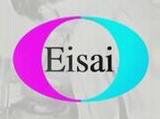OBJECTIVE: In Japan, ALT normalization induced by longterm i.v. glycyrrhizin treatment reportedly reduces the progression of liver disease to hepatocellular carcinoma in chronic hepatitis C patients. The aim of this study was to evaluate the short-term (4-wk) feasibility and efficacy on serum ALT of three or six times per week i.v. glycyrrhizin therapy in European patients.
METHODS: Patients with chronic hepatitis C, nonresponders, or unlikely to respond (genotype 1/cirrhosis) to interferon therapy were included in this study. Medication was administered i.v. three or six times per week for 4 wk; follow-up also lasted 4 wk.
RESULTS: Sixty-nine out of 72 treatment courses were completed according to protocol. There were no significant changes in ALT levels within the placebo group (n 5 13). The mean percentage ALT decrease from baseline at the end of treatment was 26% and 47% for the three times per week and six times per week treatment group, respectively (both p , 0.001 vs placebo). At the end of active treatment, 10% (four of 41) and 20% (three of 15) of the patients reached normal ALT levels for the three times per week and six times per week treatment group, respectively. The ALT lowering effect disappeared after cessation of treatment. No major side effects were observed.
CONCLUSION: It appeared feasible to treat European outpatients with chronic hepatitis C three or six times per week with i.v. glycyrrhizin. Glycyrrhizin treatment induces a significant ALT decrease in patients with chronic hepatitis C. Six times per week treatment appears more effective than three times per week.
















